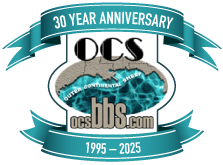Fall Results in Fatality
Effective Date: 2/28/2001
 | U.S. Department of the Interior |
| Safety Alert No. 193 February 28, 2001 | Contact: Frank Pausina |
Fall Results in Fatality
Safety Alert No. 190, issued on September 22, 2000, referenced an incident in which a contract drilling company employee who, while being lifted to the derrick’s stabbing board, fell approximately 80 feet to his death when both of his body harness D-rings became detached from the hoisting system’s hook. The hook involved contained an outward opening, self-locking latch and a latch release trigger. The body harness was a dual D-ring harness with a boatswain’s chair. Because of the above facts and MMS’s concern regarding the potential for similar occurrences, Safety Alert No. 190 was issued during MMS’s investigation of the incident and prior to the investigation’s subsequent official report.
The recommendations listed in Safety Alert No. 190 with respect to personnel lifting operations were as follows:
| All personnel lifting hooks should be a snaphook design with an inward moving, self-closing, and self-locking keeper (latch or gate), that is, the keeper remains closed and locked until unlocked and pressed open for connection or disconnection, |
| An employee on a single-point suspension-lifting device (as described above) should be protected by a personal fall-arrest system. The anchorages involved in such a fall-arrest system should be independent of the lifting device’s suspension. For example, in the above described accident, the personal fall-arrest system should consist of either a lanyard from the person to an independent lifeline, that is, not to any part of the lifting suspension line, or an independent self-retracting lifeline connected to the person. |
| All operators should review their personnel lifting operations for safety considerations. To aid in that review, your attention is directed to OSHA regulations 29 CFR 1926 Subpart L (Parts 1926.450 – 926.454) – Scaffolds and 29 CFR 1926 Subpart M (Parts 1926.500 – 1926.503) – Fall Protection. |
While MMS considers the above-referenced recommendations as still being appropriate, it is further recommended that the operation of lifting an employee on a single-point suspension-lifting device be subjected to a Job Safety Analysis (JSA). The JSA should identify all feasible fall-arrest systems for possible use. It is also recommended that the fall-arrest system chosen for a particular situation be subjected to a JSA for its use in that particular situation.
It should be noted that industry is currently reviewing the difficulties associated with lifting personnel with a hoisting device. The IADC HSE committee is currently working on developing a recommended practice for operations where workers are lifted by a hoisting device (winch) more than six feet and suspended at the work location.
—GOMR—MMS—






